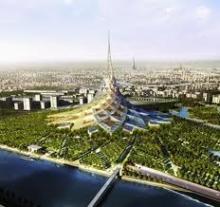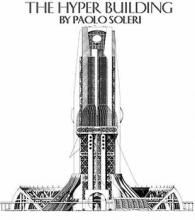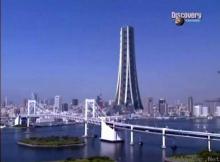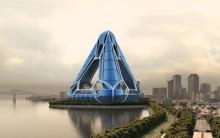Arcology is an urban planning philosophy that was developed by architect Paolo Soleri in the 1950s. Soleri is a native of Italy, but moved to Pheonix, AZ where he founded the Arcosanti Project; an ongoing sustainable urban development using ecocentric engineering and architecture. Soleri believed that urban sprawl and the exponentially increasing population would eventually negate green spaces and force urban centers to begin building vertically. Arcology is part-architecture, part-ecology; using principles of both fields in developing urban spaces that use land efficiently with an eye toward the catastrophic population numbers that seem to be an inevitability.
Urban planning has gone through a significant shift in the last decade. Understanding the need for greater consolidation in urban spaces to make energy use, waste management, and utilization of space more efficient. Many mid-sized cities' long-term strategic plans include increasing the number of people per square mile. Orange County, CA, an area of notorious urban sprawl, is using this pproach to make water usage more accessible. Many midwestern cities can no longer sustain suburban development as it encroached on farmland which are many of their states' primary industries. Even larger metropolitan cities are building vertically rather than horizontally, attempting to equalize the pressures of population growth and efficient urban planning with the slowly disappearing natural landscape. Chicago, IL, is a prime example of a suburban population that is slowly being coaxed (through incentives and revitalization projects) back into the metropolitan centers.
With this gradual movement toward greater population concentration, arcology is becoming a tangible reality. The front-runners in the practical use of arcology are in Asia, where population growth along narrow strips of inhabitable space has necessitated the use of vertical urban development. Southern China's cities are facing dwindling water and food supplies in the face of massively growing populations. Shanghai and Hong Kong have already responded to these growing pressures by building upward, creating skyscrapers that house both commercial and residential functions. Even these cities, however, are not implementing the essential philosophy behind arcology; that of a sustained and self-contained city within a super-structure.
One of the best known arcology designs is by Soleri himself, known as the Hyper Tower. The building would essentially house 100,000 people; integrating all of the municipal, commercial, residential, and industrial needs for those individuals within the super-structure. Broken into 8 main "Terras" or levels, the building delineates communities within itself, making heavy use of solar, geothermal, and wind energy as well as large green spaces, gardens, and parks housed within each Terra. Standing at over 1,000 meters high (to give you some comparison, presently the tallest building is the Burj Dubai at 850 meters) and providing everything necessary within that space, it truly is a city in the sky. The Hyper Building does it, however, in .5% of the space of a traditional metropolitan urban setting, and .033% of suburban developments and the savings from increased efficiency of transportation, energy, waste management, water, and infrastructure is estimated as much as 1000% over present metropolitan municipal costs. The price tag for this arcological marvel: $150 billion.
Architects in Japan have proposed an arcological effort in Tokyo, a city notorious for its densely populated compactness. The Tokyo "Sky City" borrows heavily from Soleri's Hyper Building, but uses three towers interconnected at various levels, which scales back the sheer size and engineering of a single super-structure. The buildings house roughly 250,000 people in about a 1/5 the space, and significantly reduces the urban heat-signature. Tokyo's average climate has risen 3 degrees over the last century, which creates a host of meteorogical, and environmental issues. (I think we've all seen pictures of individuals in both Japan and China strolling around with air-filter masks over their mouths and nose)
Arcologies may seem
like the science-fiction backdrop of some of our favorite movies (Fifth Element comes to mind). True application of arcological structures lays decades, if not more than a hundred years off, but the population pressures of large metropolitan areas are already a reality. In the next century we can expect that the projected population will increase those pressures catastrophically, which is a fundamental paradox in human civilization; as we progress, we destroy the very thing that allows us to progress: our environment. As Soleri remarked, "Swiftness and efficiency are inversely proportional to dispersion. Scattered life is by definition deprived or parasitic." (daaq.net) Sustainable urban development needs to become a fundamental force in the way that we grow our cities.



